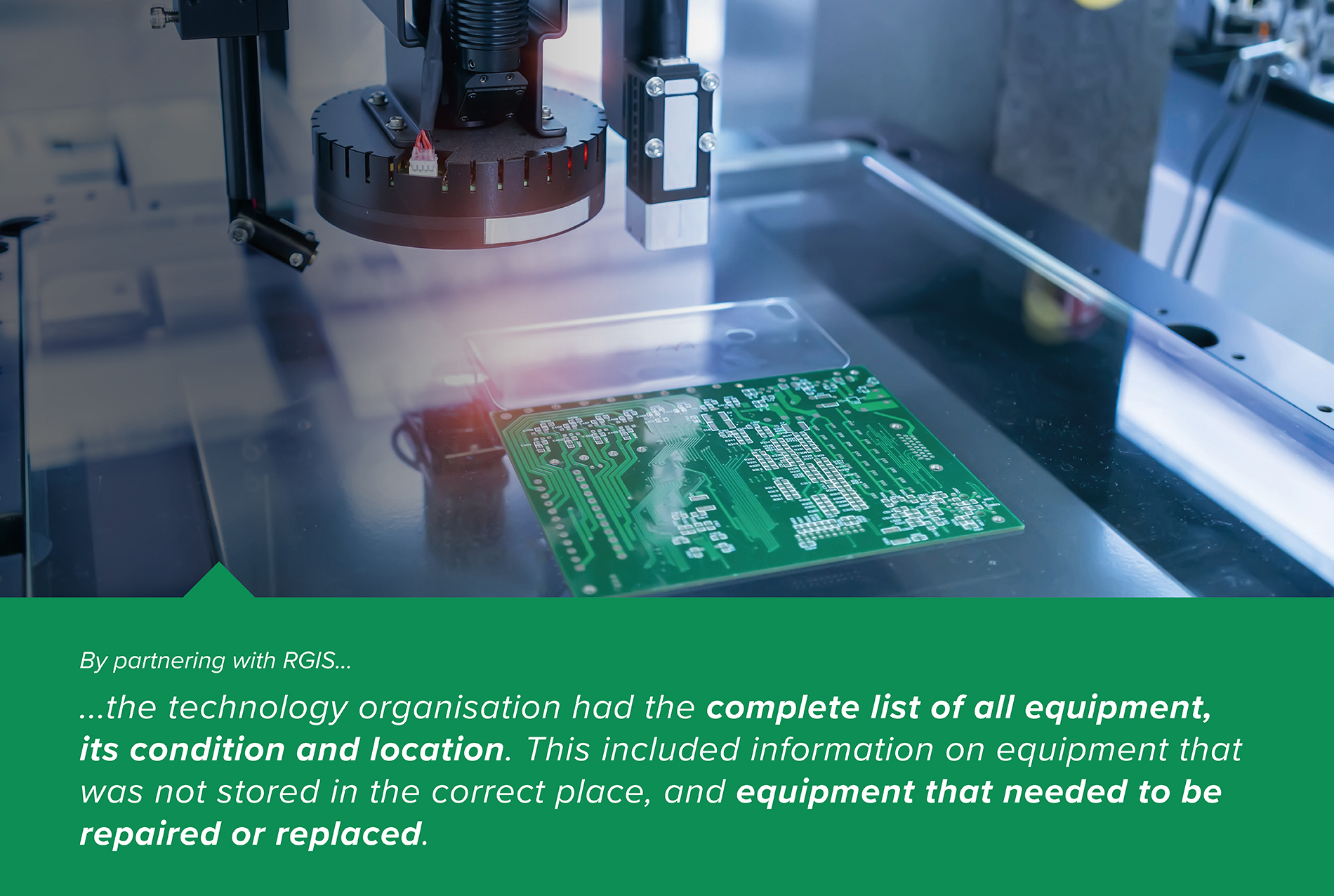Count and Test Measuring Instruments and Devices

A technology organisation that tests electrical products for safety, electromagnetic compatibility, and other product properties required the support of RGIS. The company is one of the largest technology organisations in Europe, and are regarded as a synonym for innovation and technological progress for more than 125 years. The company have approximately 2,000 employees at over 60 locations worldwide, more than 100,000 honorary experts, and 1,500 companies are dedicated to ensuring a future worth living.
REQUIREMENT
The technology organisation needed a solution to count and test the measuring instruments and devices within their workshops, so required RGIS to provide the following:
- Count all measuring instruments and devices
- Take photographs of the assets
- Test the assets to identify condition
- Log all locations of assets
SOLUTION
The technology organisation partnered with RGIS to complete the instrument count and test project, and RGIS provided the following:
- Scheduled a team of eight experienced RGIS auditors for 20 days
- Two auditors were allocated per room, each with a tablet (different apps)
- All parts that had an inventory number were recorded for each room – all cupboards, drawers, compartments, etc. were also checked
With the first app, the following data was recorded after entering the inventory number:
- Condition of the device – a distinction was made between functional, partially functional, non-functional, scrapped, untraceable, and noted accordingly
- Whether the assets were relocated or used in another TL (group)
- Building designation
- Room designation
- Calibrated (the asset was identified by a large sticker if not calibrated)
- Obvious deficiencies for work safety
- With the second tablet, a photograph of the item was taken after entering the inventory number
RESULTS
The technology organisation found by outsourcing the instrument count and test project to RGIS, the following results were achieved:
- The customer had the complete and accurate list of all the equipment, its condition and location
- Received information on which parts were not stored where they were expected to be, and which parts needed to be repaired or replaced